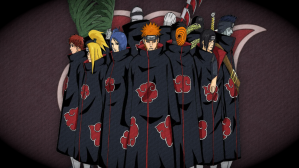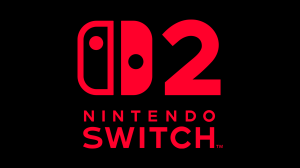Star Wars: The Rise of Skywalker has pretty much cemented the fact that the Star Wars Sequel Trilogy will go down in history as one of the most divisive franchises in history – especially when it comes to the story of Luke Skywalker (Mark Hamill). After The Force Awakens promised Star Wars fans an epic reunion with Luke, The Last Jedi (literally and figuratively) tossed that promise aside. The Rise of Skywalker goes through some bumbling and awkward steps to try and soothe fan ire over Luke’s Last Jedi storyline, but in telling the larger story of Episode IX, J.J. Abrams and writer Chris Terrio manage (if only inadvertently) to totally validate Rian Johnson’s entire point of Luke Skywalker’s story in The Last Jedi!
Videos by ComicBook.com
WARNING! SPOILERS FOR Star Wars: The Rise of Skywalker Follow!
The Story of Luke – First, let’s establish what The Last Jedi actually said about Luke Skywalker. Because it has been known to be misinterpreted (to put it mildly…):
Last Jedi posits the notion that after Luke’s falling out with Ben Solo, the Jedi Master and hero of The Rebellion becomes a cantankerous old hermit on Ahch-To. Fans are still fuming over seeing Luke toss his lightsaber away and refuse to fight in The Last Jedi‘s desperate struggle between The Resistance and First Order. However, while it may have questionable to play the moment for laughs, Johnson clearly understands Star Wars better than some fans and/or trolls give him credit for. Not only was Luke’s story in The Last Jedi logical for his character, it was the only story that makes sense in the context of the larger Skywalker Saga.
Luke Becomes Yoda – It has to be remembered that when we first meet Master Yoda in the Star Wars Original Trilogy, he’s not just living in hiding in the Dagobah System – he’s living in self-imposed exile. We know that, because when the Force sends destiny calling on Yoda again in the form of Luke Skywalker, the old master doesn’t just hop in an X-Wing and run off with Luke, ready to pop his lightsaber and start doing backflips again (that was Obi-Wan’s task). Yoda has been burdened by his failure to stop the rise of Darth Sidious and The Empire; Clone Wars also revealed that on a deeper level, Yoda was also burdened by how he let the Jedi Order become generals and soldiers during the Clone Wars, rather than peacekeepers they were ideally supposed to be.
To resolve those conflicts, Yoda’s contribution to save the galaxy and balance The Force is teaching and preparing Luke to do something other than just fight. In Return of the Jedi, Yoda becomes one with The Force because he’s prepared Luke mentally and spiritually to not fight at a pivotal moment when light and dark meet. Yoda’s teachings allow to put down his sword and trust in his father; that “kills” Vader and resurrects Anakin Skywalker, thereby correcting the great imbalance in the Force Anakin caused in allowing Sidious and The Empire to rise. Yoda played his part in the great design by not confronting evil directly, but teaching a younger generation of Jedi how to conquer it spiritually – an accomplishment Yoda took on faith, never knowing for sure if it would work before he died, but having the faith that allowed him to come back as a Force ghost and help see the mission through.
Luke Completes Yoda’s Mission – The parallels between Yoda’s storyline in The Empire Strikes back and Luke’s storyline in The Last Jedi should be as apparent as any of the many, many, parallels the Star Wars Sequel Trilogy draws between itself and the Original Trilogy – and yet it somehow still isn’t treated that way with some fans, who act as if Rian Johnson went totally AWOL on the entire themes of the saga (spoiler: he didn’t).
Like Yoda, Luke went from the heights of being revered as a great master and hero, to that pride leading to an epic fall. Both Yoda and Luke come to realize through isolation and meditation that they (and in larger sense, The Jedi) suffered great hubris in their victories – hubris that allowed the dark side to rise to power. For Yoda, it was allowing Chancellor Palpatine to break the Galactic Republic and bring back The Sith; for Luke, it was fearing Ben Solo’s power and allowing Snoke (who we now know was Palpatine) to finally seduce a powerful Skywalker to the dark side – just as the Sith Lord always wanted. Both Yoda and Luke’s stories therefore end up following the same arc: Yoda trains Luke to resist the dark side by not giving into anger and fighting Vader, and in doing so, Yoda is able to finally become one with the Force, and later help embody Rey with the power she needs to beat Sidious.
The Circle is Complete – In The Last Jedi, Luke learns from the mistake he made with Ben by not taking up the sword again, and instead opening Rey’s eyes to the mistakes that he and Yoda, and Obi-Wan, and Anakin (i.e., The Jedi) all made. Luke redeems himself with Ben by not actually taking up the sword against him in their final duel, while also giving Leia and Rey and co. a chance to escape. That escape allowed Leia to become Rey’s true teacher chance and finish her training, and between Leia’s influence and training, and Luke’s warnings about the hubris of Jedi, Rey gets everything she needs to resist the lure of Palpatine and the dark side, and heal Kylo Ren, instead of killing him. Because both Luke and Rey show him mercy (and Han and Leia show him love), Kylo Ren is able to find his way back to being Ben Solo again.
Luke’s story in The Last Jedi sets the stage for both Rey and Ben to finally end The Sith threat – and sets the stage for all those who failed to stop Palpatine from rising and/or tainting the Skywalker line (Qui-Gon Jin, Obi-Wan, Mace Windu, Yoda, Luke, Leia – even Ahsoka Tano) to aid Rey in her moment of truth. Like Yoda, we never saw Luke jump back into the fray and swing his lightsaber around – but that doesn’t diminish the fact that his teachings and indirect actions provided what was needed to push destiny along – which is why he was welcomed into the Force, like all of the Jedi heroes that gave their lives (and afterlives) to stop Darth Sidious.
It Wasn’t Rian Johnson’s Fault – The thing to keep in perspective here is that Rian Johnson wasn’t solely responsible for all of the puzzle pieces that set the stage for Luke’s Last Jedi story. Yoda and Luke’s Original Trilogy character arcs (and Yoda’s Prequel Trilogy arc and failures) were all created by George Lucas; Luke’s falling out with Ben Solo and self-imposed exile were all part of J.J. Abrams story in The Force Awakens (that movie so many fans love). Luke simply playing out the Yoda-esque role of the Sequel Trilogy is a weird thing to get upset about – let alone crucify Rian Johnson for. And even though Luke’s appearance in The Rise of Skywalker may throw heavy shade at The Last Jedi, it doesn’t erase the resonance and power of what Rian Johnson did with the character, and the deeper themes of the Skywalker Saga.
Star Wars: The Rise of Skywalker is now in theaters. The Mandalorian is now streaming on Disney+.









